Because of the many centuries of expansion by the Islamic nations, we often think of Syria as a Muslim land, having but an insignificant connection with Christianity that has already disappeared into oblivion. However, this is definitely not the case—there are a multitude of saints to whom, or by whose words Orthodox Christians pray every day all over the world, who are in one way or another bound up with Syria. Today we are happy to tell you about eight bearers of this living Church Tradition, who unite us with Syrian cities, monasteries, and churches.
The Holy Chief Apostle Paul (†64–67)
Despite the fact that Saul of Tarsus was, according to his own words, “a Pharisee, and the son of a Pharisee” (Acts 23:6), his path to ancient Damascus began with an agreement with the Saducees whom he hated—heading the persecution against the heretics, the young scribe probably considered it necessary to place the preservation of the Law of Moses higher than the internal disagreements of Jewish parties. Accompanied by the High Priest’s guards, Saul, filled with hatred for the followers of the Crucified One, left Jerusalem to return as an apostle—an apostle to the pagan gentiles.
Although sources have not preserved for us the names of those places where the future martyr for Christ heard his Savior’s first words to him (cf. Acts. 9:1–7; 22: 1–6; 26: 9–18), Church Tradition takes care that even Paul’s stopping points (maqamat) remain in the memory of subsequent Christian generations. One of these stopping points is located to the south of the Syrian capital, in the region of at-Taballa. In the same place where he was called to be an apostle, eighteen kilometers from Damascus, is an Orthodox stavropegic monastery of the Entrance of the Theotokos into the Temple, in Jedidat-Artuz, restored by the Antiochian Church in 1961.
Damascus itself, where twenty centuries ago Saul was led blind, remembers his baptismal font in the house of the apostle of the seventy Ananias, as well as the tower through which a basket with the transformed persecutor was lowered to the foot of the citadel steps. Modern pilgrims can easily find both of these places in the ancient part of the city—the first is known as the church of St. Ananias in Bab-Toma, and the second is called the tower of Bab Kisan.
The Holy Apostle and Evangelist Luke (†80s)
Apostle Paul’s faithful co-laborer, an apostle of the seventy, the doctor, iconographer, and evangelist Luke is also connected with Syria: It was on the Syrian coast that the first Christian iconographer in history according to tradition painted an image of the Mother of God. This icon was preserved in the church dedicated to the Holy Virgin, who is in turn especially honored to this day by the local people.
Holy Equal-to-the-Apostles Thekla, the Protomartyr (early second century)
One of the martyrs converted by the apostle Paul in the first centuries was Thekla of Iconium. Inspired by the apostle Paul’s sermons, the aristocratic Thekla, against her parents’ will, broke her marriage engagement and announced her firm desire to follow her teacher in his preaching of the Gospel. Miraculously escaping death by burning, the maiden followed the apostles Paul and Ananias to Antioch, where she lived the larger part of her life. St. Thekla suffered many tortures for the sake of Christ, and at the age of ninety died in a cave at Mt. Kalamon, around which later a monastery was built bearing the name of the protomartyr.
St. Ignatius the God-bearer, Bishop of Antioch (†107)
Although St. Ignatius never saw Christ in the flesh1 he doubtlessly was a contemporary of the apostles John, Paul, and Peter; he succeeded the last of these when he occupied the Antiochian cathedra. Born in Antioch, St. Ignatius spent his whole life in the Syrian land, leaving it only for his final podvig—that of martyrdom. In 107 the second bishop of Antioch, preaching along the entire road to Rome, was given over as food to wild animals by the torturers.2
A disciple of the “apostle of love” John, St. Ignatius was without any doubt an “apostle of unity”. Calling the fullness of the Church, clergy, and laity to “harmonious love”, the God-bearer emphasized the importance of community as the only possible principle of man’s existence with God and in God. “In very fact, if I in a short time would have such friendship with your bishop—not human but spiritual—then so much more are you blessed who are united with him just as the Church is with Jesus Christ, and as Jesus Christ with the Father, that all might be in accord through unity. Let no one be deceived! Whoever is not within the table of oblation deprives himself of divine bread. If the prayer of two has great power, then how much more powerful is the prayer of the bishop and the whole Church?” exclaimed the saint.3
Holy Great Martyr George the Trophy-Bearer (†303–304)
Everyone loves St. George, known to the Slavic peoples since the Middle Ages. He has been famous to the Syrians since late antiquity; his native city was Lydda, close to every Syrian both geographically and spiritually, since the path of the Great Martyr’s service that led him to Nicomedia most certainly ran through Syria. It is no accident that a particle of the Trophy-Bearer’s relics (his thumb) is preserved today in one of the churches of Kafrbakhma, located not far from the city of Hama.
St. Ephraim the Syrian (†373)
St. Ephraim has a special connection with Russian culture—he was St. Seraphim of Vyrista’s favorite ecclesiastical writer. We can’t think of Great Lent without remembering his prayer.4 An outstanding intellectual and ascetic of his time, St. Ephraim the Syrian combined in his heritage “Hellenic wisdom” with the quintessence of his ascetic experience. “What an extraordinary wonder! Whoever has unhypocritical love fulfills the whole law; for love is the fulfilling of the law as the apostle says (Rom. 13:10). O, incomparable power of love! O, immeasurable power of love! There is nothing more precious than love, neither in heaven nor on earth. Therefore the apostle Paul, teaching that there is nothing equal in value to love, wrote and sent to all the ends of the world: Owe no man any thing, but to love one another: for he that loveth another hath fulfilled the law (Rom. 13:8). Such is love—the supreme head of all the virtues; love is the fulfillment of the law, love is immutable salvation. It first abode in the heart of Abel. It was Noah’s rudder; it made David the dwelling place of the Holy Spirit; it inspired the prophets; it strengthened Job. And why not speak of what is most important? It brought the Son of God down to us from heaven,” wrote the holy father, preaching to his disciples the foundation of any Christian spiritual activity.”5
The ascetic wrote the larger part of his works in the Syrian town of Nisibia (modern Nusaybin), located today on the Syrian-Turkish border. There the future theologian learned from St. James, whose name churches of Nusaybin bear, to later serve as a deacon with his successors—Bishops Babe, Valgashe, and Abraham. St. Ephraim’s native city, which was often attacked by the Persians, is mentioned in his works. For example, he recalls how the outskirts of Nisibia were flooded after one of these invasions, and compares the city with Noah’s ark.6
St. Simeon the Stylite (†459)
The reading of the Savior’s Sermon on the Mount changed the eighteen-year-old Simeon’s life at its very foundation, and he burned with the desire to leave the world for the sake of spiritual ascetic labors. Soon after he entered the monastery, the brothers began complaining to the abbot about the young monk’s astounding zeal, exhausting himself with all kinds of ascetic labors and deprivations, which finally led him to leave the monastery. Taking up his abode at the bottom of a well, the saint was able to refrain from touching any food or water for weeks—something many of his contemporaries witnessed many times. In the 420s, Simeon chose a new kind of ascetic labor for himself, hitherto unknown in monastic practice: The saint settled alone on the top of a stone pillar where he spent days and nights in prayer, instructing the people who came to him in large numbers. Among the many faithful who visited the ascetic was Emperor Marcian himself, who called the Ecumenical Council in Chalcedon.
The place of St. Simeon’s asceticism is known through the effort of his followers, who in around 490 built there a church and a monastery dedicated to the saint. As a beautiful citadel, the “Fortress of Simeon” (“Qalʿat Simʿān) played a special role in the history of Allepo, which is not far from the fortress.
St. John Damascene († c. 753)
For fear of Thee, the end that is death
became like a servant and was ordered
to approach the Master of Life,
whereby He awarded us life without end
and the Resurrection.
Canon of the Resurrection, Tone 6, Canticle 1
Christians throughout the world greet the holiest day of the week with the Sunday hymn of St. John from Damascus from the cycle of services. The creator of numerous akathists, canons, hymns, religious-philosophical treatises, and finally, the apogee of Orthodox dogmatic thought—the encyclopedic An Exact Exposition of the Orthodox Faith, St. John goes down in history as a great ascetic and defender of piety.
Mansur (that was his name before the monastic tonsure) was born in Damascus in around the year 675, in the family of the great logothete Sarjun at-Taghlibi. Like his father, the youth studied the sciences and became the court logothete of the caliph. According to tradition, after the iconoclast Emperor Leo III’s slander against the theologian, who staunchly defended the veneration of icons, the caliph relieved Mansur of his position and cut off his hand. But at the prayers of the Mother of God, his hand grew back onto his arm in one night. Grateful for this healing, the saint placed a silver arm on the icon of the Most Holy Virgin, which led to the veneration of the icon of the “Three Hands”.
After decades of living in the capital, Mansur departed for Jerusalem where he received the monastic tonsure with the name John in the Monastery of St. Savva the Sanctified. The holy father lived the rest of his life in the monastery, where he reposed in around 753, having been anathematized by the iconoclastic council; only after the Seventh Ecumenical Council was the saint’s name cleared of all the heretic’s slander. In the polemic vein established by St. John John Damascene did both Christian and Moslem Medieval thought develop, and the so-called “arm of John” was used everywhere to reckon the date of Pascha by Christians in Africa, Europe, and Asia.

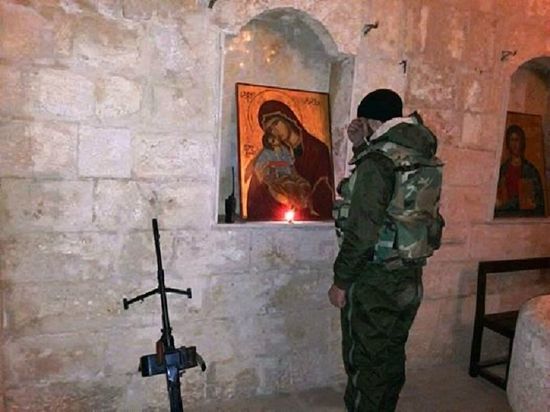
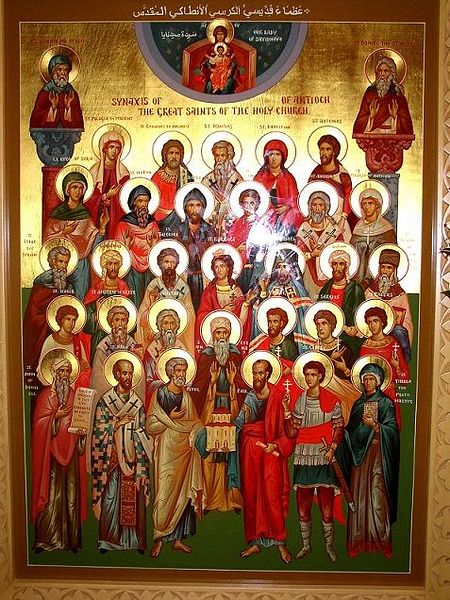
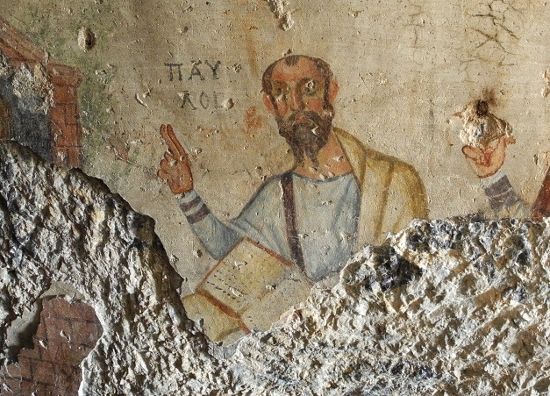

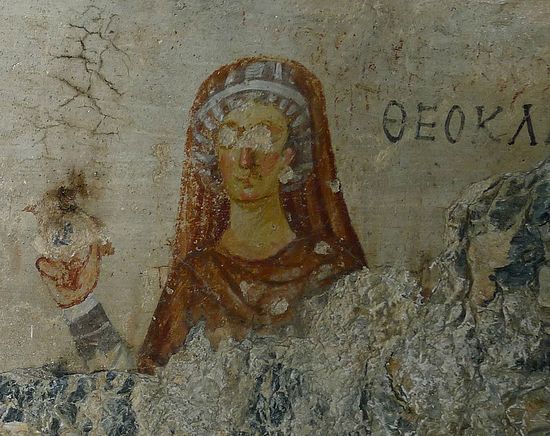
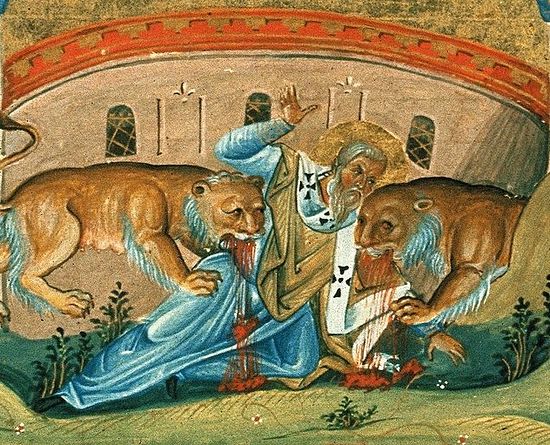
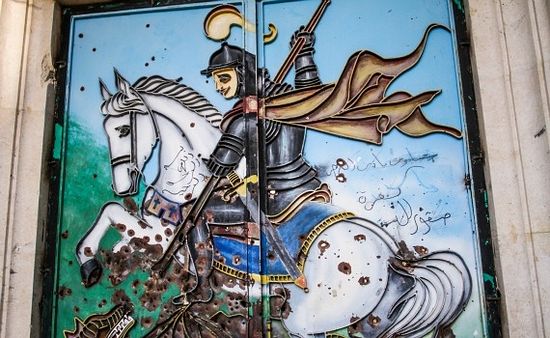
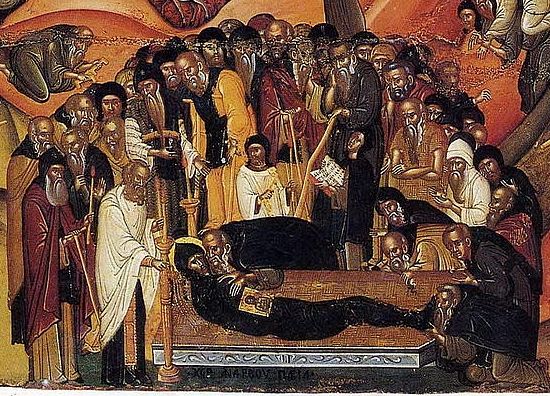
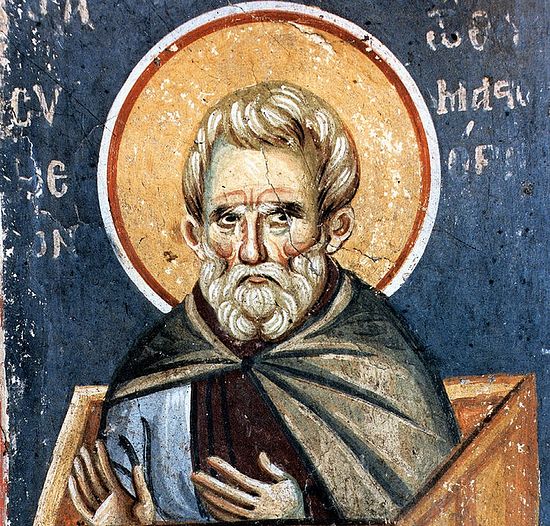
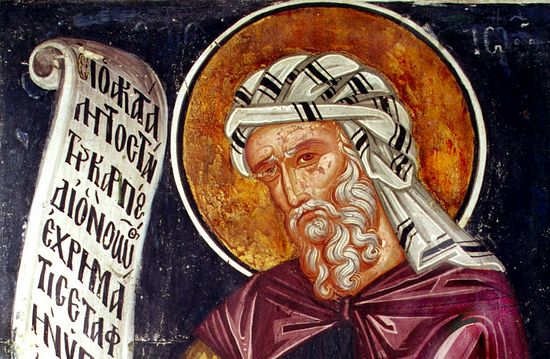

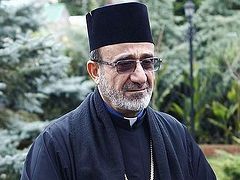
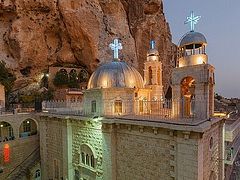
My name is Michael Alyas.
I was searching for the Icon of the Antiochian Saints found on your website.
Please advise of how can I get a copy of to send to Australia?